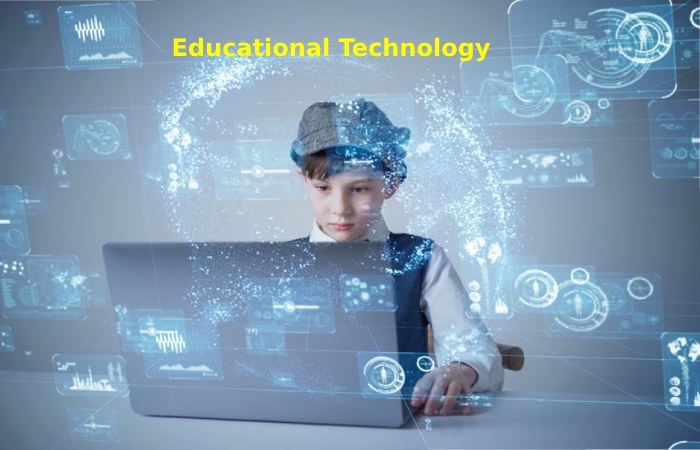Table of Contents
Introduction
Educational technology is a system of interaction between the teacher and the students based on a specific concept defined by a purpose, objectives, principles, content, methods, and means of teaching.
Educational Technology

The term technology comes from the Greek word and means ability or skill, and technology is understood as the science of mastery.
The formation and development of educational technologies are due to the following reasons:
- The emergence of the need to use as fully and deeply as possible the psychological and personal characteristics of students in the teaching process.
- Gradual awareness of the need to replace ineffective forms of teaching with modern, relevant, and effective ones.
- The need to design the educational process, as well as the forms of interaction between the student and the teacher, capable of providing and guaranteeing high learning results.
Characteristics of Educational Technologies
Educational technologies have a series of essential characteristics:
- It supports a specific scientific idea, which will later serve as the basis for the technology.
- Integrity. It is aimed at the interrelation of all the structural components of educational technology, giving it the necessary specific qualities.
- The check. It suggests the possibility of diagnosing goal setting, monitoring the educational process, and correcting it if necessary.
- Playback. It offers the possibility of using this technology by different teachers due to its replicability.
- Efficiency. Its objective is to achieve the goals of education by educational standards. Provides for the reduction of economic costs (losses) and time.
Educational technology in its structure is represented by a series of interconnected components described by:
- The conceptual framework.
- The essential part (content) defines the objectives and scope of learning.
- The procedural part, represented by the educational process directly organized, is the teacher’s methods, forms and means of work.
Types of Educational Technologies
Currently, the following types of educational technologies are distinguished.
Person-Oriented Education Technologies
These technologies imply recognizing the student’s desire and aspiration to acquire knowledge and skills and develop her potential as the main driving force. The process of self-education and self-updating of the student is of great importance within the framework of this technology.
The main motives of the individual are the desire for knowledge, self-realization in society, possible prospects in the future profession, personal satisfaction from the position one has in the community, and also the attitude of others towards it.
Person-oriented learning technology provides three primary methods:
- The learning elements are presented in the form of multi-level tasks.
- The great importance of dialogue in the learning process.
- Playful learning methods.
Modular Learning Technology
This learning technology is based on the idea of a person-centered approach based on the learner’s personality. The leading modular learning technology is the independent development of educational disciplines, which are divide into modules for convenience. This technology has emerged as a counterweight to traditional learning and also is based on each student’s individual abilities and needs.
Modular learning technology is a type of modular education technology. It is an educational and methodical complex that consists of several disciplines, each of which is divide into blocks, the time of its study is determine, and its final objective is mark. An important place is occupied by a self-monitoring system, which is necessarily contain in each module, as well as at the end of the study of the discipline.
Problem-Based Learning Technology
This technology is building the learning process in such a way that students are constantly facing learning problems. The solution to learning problems aims at mastering the teaching material and acquiring knowledge, skills, and abilities. Thus, problem learning technology allows me not only to master theoretical knowledge but also to gain practical skills and experience in creative solutions to various tasks. The essence of this technology is that a teacher does not provide students with the entire volume of educational material but directs them to find and master it through academic tasks independently.
Playful Learning Technology
It is based on the fact that the game is in the same relationship as learning with work since it is one of the main activities of the child. This technology’s primary purpose is to stimulate students’ cognitive activity and develop an interest in knowledge.
Computer Training Technology
based on the use of information technology in the learning process. Technology is apply through computers and other multimedia means. The use of computer technology makes the learning process modern, cognitive, and interesting for children.
In computer technologies, there are two quite relevant educational technologies:
- Programmed training, i.e., the controlled assimilation of programmed learning material using a device (computer, programmed textbook).
- Distance learning is also called online education, as it is relate to developing new media and information distribution possibilities. Distance learning is primarily intend for the individual training people who wish to receive education externally.
Conclusion
Educational technology combines computer hardware, software, and educational theory and practice to facilitate learning. When referred to with its abbreviation, edtech, it often refers to the industry of companies that create educational technology.
